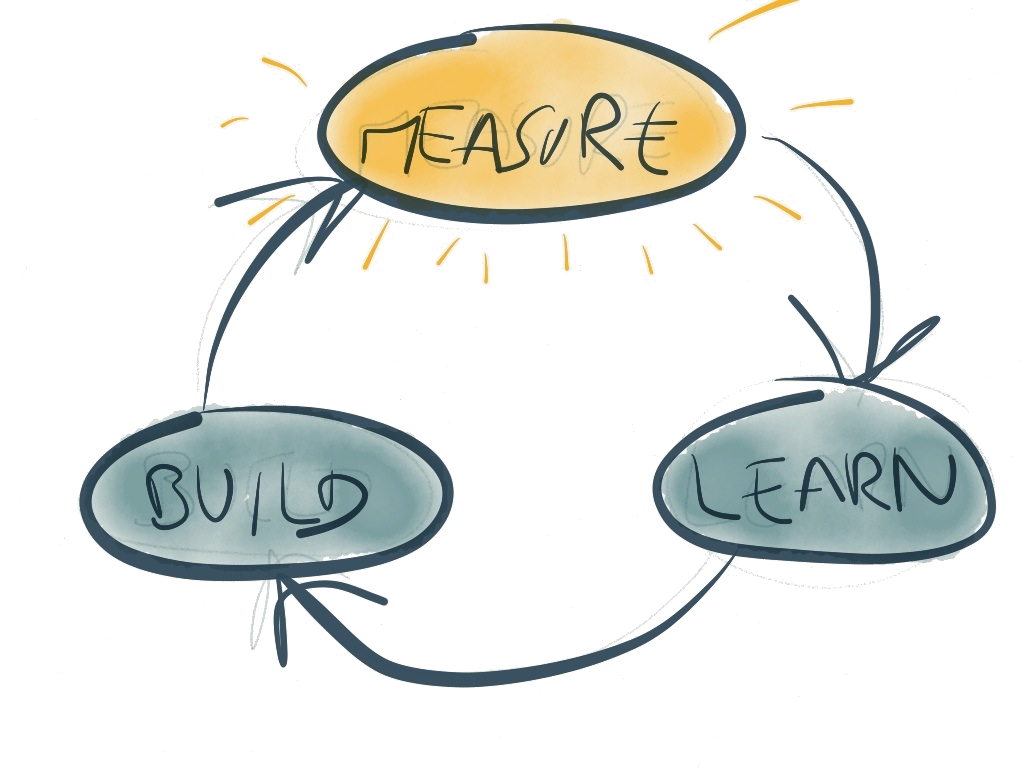 For Lean startups, testing, iterating and learning have to happen fast. One way to do that is by building a Minimal Viable Product (MVP). An MVP is the product with the smallest possible set of features that allows a teams to collect the maximum feedback with the least effort. In the beginning, an MVP is nothing more than a page with a brief description of what the product or service will one day be, with an email submission form for anyone who is interested in learning more and hearing about the product when it launches. The idea is that if nobody wants to hear more about your product or service, it’s probably not worth building. If lots of people sign up, you know you’re onto something.
For Lean startups, testing, iterating and learning have to happen fast. One way to do that is by building a Minimal Viable Product (MVP). An MVP is the product with the smallest possible set of features that allows a teams to collect the maximum feedback with the least effort. In the beginning, an MVP is nothing more than a page with a brief description of what the product or service will one day be, with an email submission form for anyone who is interested in learning more and hearing about the product when it launches. The idea is that if nobody wants to hear more about your product or service, it’s probably not worth building. If lots of people sign up, you know you’re onto something.
The advantage of an MVP is that it’s cheap to build and the feedback you get informs the next iteration of the MVP. Building incrementally, and with constant feedback, it’s much harder to go wrong, and you can keep scope creep at bay.
Nonprofit Barriers to the MVP
Why don’t nonprofits use MVPs? At first glance, there doesn’t seem to be any reason not to use this iterated learning approach to build new programs and experiment with problem-solving. Some significant barriers include:
- In order to win grants, nonprofits try to demonstrate expertise with solving a problem. The very nature of grant applications, which typically ask for complete logic models, clear metrics, and plans for scaling up, make an MVP approach impossible.
- Narrow margins for investment. Nonprofits already find it difficult to pull money away from existing programs to invest in new approaches. The idea that money will be spend iterating on programs that are destined to fail or be impossible to scale, as many MVPS are, is hard to swallow. MVPs are vehicles for learning, but their costs come out of the program budget, not the professional development budget.
- No room for failure. Nothing deflates fundraising like failed programs. This leads to a lot of innovation in nonprofits happening behind closed doors, in under shrouds of secrecy. MVPs depend on learning from customers, and that means being public in big ways. Nonprofits are sensitive to failing in public ways.
- Nonprofit activities often depend on partnership with other organizations, institutions, and funders. Building consensus around an MVP approach may be challenging, and in fact, the minimally viable program may not look all that minimal!
Can anything be done to help nonprofits embrace the MVP? How can we change our thinking and approach to learn more before we leap into execution mode? Are there other tools and lessons from the Lean methodology that nonprofits can apply? We’ll cover more of that next week, as we continue to explore nonprofits and Lean Methodology.


